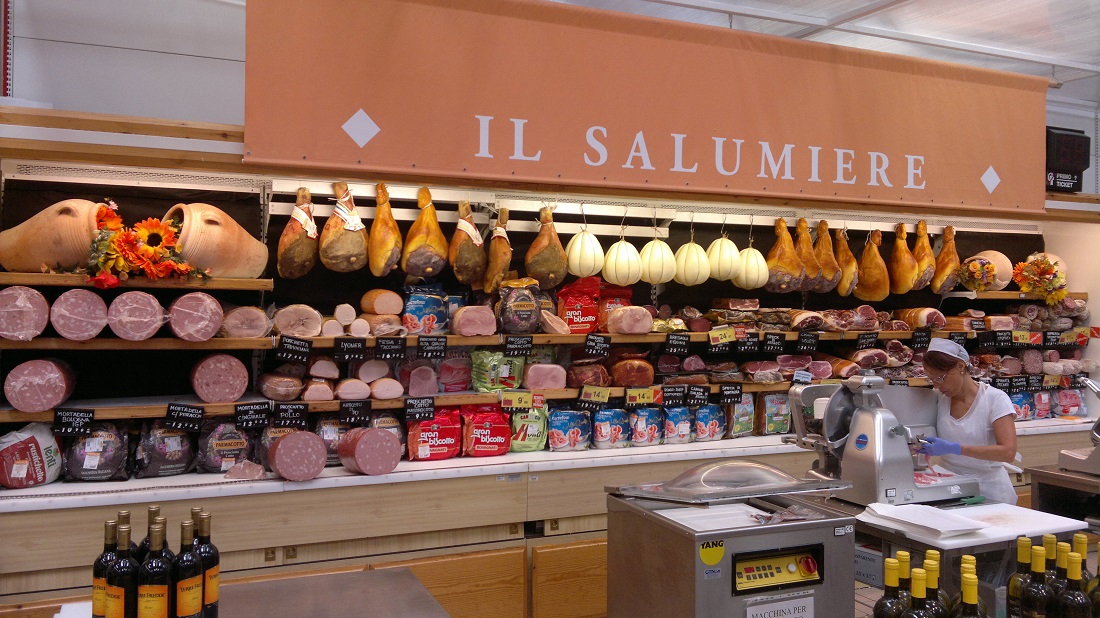- HOME
- Slow Food Italy
You come to Italy thinking it will be a trip. You leave knowing it was a beginning
Slow Food Italy
On my site, I recently wrote about shopping in Turin, Italy, and about the incredible experience of eating at the original Eataly. A visit to Eataly is the easiest way that you can experience, under one roof, the best food in Italy and the fabulous wines of Piedmont, all endorsed by Slow Food Italy.
Okay, so what is Slow Food, I hear you ask? Read on for the answer...
The Slow Food Italy Association began in 1986. It came about to protect Italian traditions and food from the fast food culture and as an attempt to protect smaller traditional food producers from being overwhelmed and swallowed up by corporate giants. It was about knowing where and how your food was produced and by whom, rather than simply being fed the diet corporate giants have been feeding us for years based more on their huge profits than the wholesomeness of the product.
The Slow Food movement seems to have touched on something all of us have felt, no matter where we might live. The movement quickly exploded into a global movement and now has over 50,000 members in Italy and 100,000+ in a further 160 countries.
Slow Food is as much a philosophy of life as anything else. The movement's logo, the snail, symbolizes the pace at which we should savor our food and the way we should live our lives, taking the time to appreciate the good things in life
It represents a slower lifestyle, enjoying the pleasures of life. In essence, it is the exact opposite of the fast-food, frenetic lifestyle of today.
It is a snowball that is becoming a global battle against corporate brands, uniformity, and poor-quality food.
Slow Food producers are the little guys and families that have been producing products fresh from the land—organically grown products—long before “organic” became popular. These are genuine people producing genuine products.
Where it all Began
The heart of the Slow Food Italy movement is Piedmont, and it is in Piedmont that the Slow Food movement opened the world’s first University of Gastronomy. Nestled in the picturesque village of Pollenzo, the university offers undergraduate degrees in gastronomic science and other related subjects.
It accepts students from all over the world who converge to study gastronomy, sustainability, and the intricacies of food production. and the graduates invariably go on to become leaders in food and the culinary arts. They help carry the Slow Food message to all four corners of the earth.
Attending one of their workshops can be a transformative experience. You'll gain insight into traditional food production methods, organic farming, and the importance of biodiversity. Don't miss their garden, a colorful mosaic of vegetables, fruits, and herbs, brimming with flavors waiting to be discovered.
Slow Food Experiences You Must Try
Slow Food in Piedmont is about more than just food; it's a philosophy. To immerse yourself fully, embark on a journey through the region's culinary treasures:
1. Truffles in Alba:
Few experiences can match the thrill of a truffle hunt in Alba. Piedmont is renowned for its prized white truffles, often referred to as "white gold." Join local truffle hunters and their loyal dogs as they unearth these aromatic gems hidden beneath the earth's surface.
2. Cheese in Bra:
The town of Bra is a mecca for cheese lovers. Don't miss the annual Cheese Festival held here, where you can sample some of the world's finest cheeses. To delve deeper, visit a local dairy, watch artisans at work, and savor their creations.
3. Slow Food Restaurants:
Piedmont is dotted with exquisite Slow Food restaurants. These establishments are dedicated to using locally sourced, seasonal ingredients. From creamy risottos to succulent cuts of meat, every dish is a culinary masterpiece.
4. Barolo Wine in the Langhe Region:
For wine enthusiasts, the Langhe region is a paradise. It's the birthplace of Barolo, one of Italy's most celebrated red wines. Visit a local winery, where you can tour the vineyards, learn about the winemaking process, and, of course, indulge in tastings of these complex, rich wines.
5. Castelmagno Cheese:
In the heart of Piedmont lies the village of Castelmagno, home to one of the rarest cheeses in the world, also named Castelmagno. It's made exclusively in this small village using age-old methods, and its production is so controlled that only a few hundred wheels are produced each year. This cheese is so sought-after by connoisseurs that it can fetch crazy prices, making it a true hidden treasure of Piedmont.
If you enjoy my site, I'd love your support.
All you need to do is book your accommodation via this link or any of the other hotel links on the website. Whether it's for travel to Italy... or anywhere else on earth, your support means the world to us.
You'll get the best deal available, and the income helps us stay independent and keep bringing you the best of Italy.
- HOME
- Slow Food Italy










New! Comments
Have your say about what you just read! Leave me a comment in the box below.